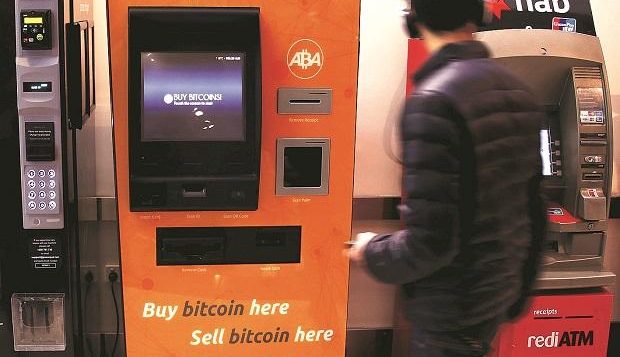“I [used to think]Bitcoin’s great, Ethereum’s great, those people in financial services probably don’t know what they’re doing. I’m much more humble now. They know what they are doing.” So said Shaul Kfir, Chief Technology Officer at Digital Asset. It was a refreshing admission that the cryptocurrency community is suffering from the arrogance of youth. Those old fogeys in traditional financial institutions just might know a thing or two that they don’t.
If only others were as humble. Just as Kfir made his remarks, a new post went up on Medium which said it answered “15 claims against Lightning”. It was written by pseudonymous “Cryptoconomy”, who also produces a podcast.
Lightning is the second-layer network that Bitcoiners hope will eventually make Bitcoin usable as a mainstream medium of exchange. It is a complex system which is poorly understood both outside the Bitcoin community and, unfortunately, within it. So, this piece starts off with a useful layman’s explanation of how Lightning works. And it then attempts to address some of the technical misunderstandings of the system. I disagree with some of the conclusions – for example, I think that if Lightning is to function efficiently as a medium of exchange, it will end up being considerably centralized. But this is a matter of opinion. Thus far, it’s a useful post.
But when it reaches point #10, it goes badly off the rails. Firstly, it claims that “Lightning is not an IOU”. Now, whether or not Lightning channels are IOUs is a contentious issue. When you commit funds to a Lightning channel, are you lending those funds to the other party? When someone makes a multi—hop payment using your funds “in passing”, have they borrowed those funds? These are not technical questions, they are legal ones.
I hoped to read a reasoned case explaining why committing funds to a Lightning channel isn’t lending, and why multi-hop payments don’t involve borrowing. But that’s not what the piece does. Instead, it constructs a straw man about banks:
A traditional IOU is often an empty promise with no guarantee. It screams of the current banking system, they tell me they will pay me back, but I have no idea if they can and no way to enforce their promise if they fail to keep it. I am wholly at the bank’s mercy and competence. In short, we would never want to build the new financial system on the same weak promises that have undermined the legacy system and drowned it in debts that are impossible to pay back.
IOUs can be, and often are, entirely backed by collateral. Mortgages, for example, are loans that are fully backed by property assets. Furthermore, in the U.S. and Europe, deposits in banks are fully guaranteed up to a limit. In the U.S., you can put up to $250,000 in a bank account in the certain knowledge that you will get it back. In Europe, the limit is lower – currently €100,000 or the equivalent in local currency. But it’s still high enough for most purposes. To say that there is “no guarantee” for bank deposits is, to use the article’s own terminology, FUD.
The article then goes on to demolish its straw man:
So if we take a close look at all the pieces involved in the commitment transaction, but still insist on using the IOU language, here’s my best description of Lightning. It is a mutually agreed upon Bitcoin smart contract that can be updated only with the express consent of both parties….
Just like a bank loan or deposit then, except that the contract is a piece of code instead of a piece of paper.
It has confirmed, on-chain proof-of-reserves;
Just like a mortgage, then. Or a bank deposit account that is backed by a fully-funded deposit insurance scheme.
it has a wait time for withdrawal if only one party is present
Why should I have to wait until the other party is open for business in order to withdraw my funds? Back in the olden days, I couldn’t withdraw my funds if my bank was closed. But now, technology (ATMs, online banking) enables me to withdraw my funds and make payments whenever I want, regardless of whether my bank is open for business. Lightning’s “wait time” is hardly progress.
it has a built-in insurance policy in the case of dispute
Just like a deposit account, then.
and it has a punishment clause for any party that initiates an attempt to rescind an updated and signed version of this contract.
Yes, so does a bank account. The only difference is that the recourse is to the courts. I agree automating this might be clever.
So now we’ve established that there is no significant difference between a Lightning channel and a bank deposit account, can we agree that Lightning channels are IOUs?
Apparently not:
This is not exactly an agreement that I would simplify to a label as unenlightened as “an IOU.”
It’s not enlightened to call something a duck, even if it waddles like a duck and quacks like a duck. Riigght.
Moving on to point #11, “Lightning is Built so that Banks can Control Bitcoin”, things go from bad to worse. “I want to hit this idea hard,” says Cryptoconomy, “because I think it can be considered highly unlikely by an evaluation of any of these elements individually:
- the topology of the current lightning network.
- the current methods that banks use to make money and direct finances.
- the current methods that VISA and other payment networks use to stay profitable.
- an elementary understanding of the scripting and security measures built into the Lightning protocol.”
It soon becomes painfully evident that Cryptoconomy doesn’t have the faintest idea about two of these four elements. Specifically, banks and VISA. Here’s how Cryptoconomy describes banks:
The whole reason banks enjoy enormous power, is because they have custodial control of everyone’s funds, and customers have no way to enforce the agreement with the bank. Banks can loan your money out without your knowledge. Banks have the politically granted authority to actually issue *new* money against your balance and then collect interest on it. They aren’t even legally obligated to pay you back anymore in the case of the bank going under. According to new laws passed both in the US and across the EU during the 2008 financial crisis, all customers are now “creditors” to the banks, and therefore our deposits can be used to pay off the banks liabilities.
As someone who has spent ten years debunking this nonsense, seeing it repeated here made me want to throw a brick through my laptop screen. Shaul Kfir’s remark about humility sprang to mind. It is arrogant beyond belief to repeat FUD about banks because you haven’t bothered to do even basic research into how they work.
Firstly, banks don’t have “custodial control of everyone’s funds”. An ordinary deposit account is not, and never has been, a custodial arrangement. It is an unsecured loan to the bank. And no, this is not due to “new laws” passed in the EU and the US during the 2008 financial crisis. Banks have never been “legally obligated” to repay depositors. Indeed, prior to the creation of deposit insurance schemes, depositors could – and did – lose everything when banks failed. This is why FDIC was created!
Secondly, banks can’t “loan your money out without your knowledge”. They don’t loan your money out at all. Banks don’t lend out deposits.
Thirdly, banks don’t issue “new money against your balance”. They issue new money against the collateral of a new loan, which is often secured on some kind of asset, usually property. In the 2008 financial crisis, the driving force behind the bank failures was the collapse of asset prices, particularly property. Collateral value can change suddenly, and when it does, banks can quickly become insolvent. Does that mean you won’t get your money back? Not necessarily. In the 2008 crisis, no depositors lost money. They were repaid by deposit insurance schemes, by central banks, and ultimately by governments.
Since then, deposit insurance limits have been increased, to $250,000 in the U,S, and to €100,000 in the EU. Also in the EU, laws have been passed to enable deposits larger than €100,000 to be haircut in the event of bank failure. These are (presumably) the “new laws” to which Cryptoconomy refers. But as a result of these laws, European banks are closer now to being “legally obligated” to repay depositors than they have ever been. “Depositor preference” means that depositors whose balances are too large to be fully insured will be repaid before any other private sector unsecured creditors.
So, having written a whole load of FUD about banks, Cryptoconomy then goes on explain how Lightning will wreck banks and VISA, which Cryptoconomy seems to think is some kind of bank:
The lightning protocol fully neuters them from any kind of fractional reserve. It gives the customer a secure way to extract funds without the banks approval. It allows the customer to *punish the bank* if they attempt any unapproved control of their deposits. It completely eliminates the idea of overdraft fees. It wipes out the idea of international or wire transfer fees. It forces the banks to put up real on-chain collateral in order to maintain channels with customers and businesses. And it destroys their ability to loan out any money in customer accounts.
What this amounts to is “when Lightning rules the world there will be no credit, of any kind”.
It would take pretty stringent centralization and control to enforce that. There will always be people who need to borrow funds, and people who are willing to lend them. A full-reserve payments network won’t eliminate this need. In the brave new Lightning world, there will be credit, and therefore banks. They might go by other names, but as with ducks, so with banks.
Indeed, as Lightning offers no lending facilities at all, banks might gain from its restrictions by providing credit to cash-strapped Bitcoiners so they can fund their Lightning channels. Whether banks provide credit on a full reserve or fractional reserve basis is irrelevant, though my money would be on some kind of fractional reserve system developing, since history shows us that strict full reserve banking is impossibly illiquid and therefore doesn’t tend to last very long. But banks there will be, and they will make money as they always have done – by borrowing cheaply and lending expensively. No way is “99% of banks’ revenue generation model” in any danger of being eliminated by the Lightning Network.







